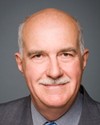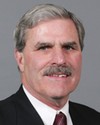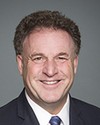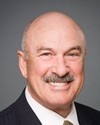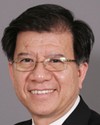Thank you, Mr. Chairman. It's a pleasure to be here with you all today.
I'm the director general of national labour operations at the labour program at HRSD. The labour program is responsible for the administration and enforcement of part II of the Canada Labour Code. The code applies to federal jurisdiction workplaces, including the federal public service and most federal crown corporations.
Part II of the Canada Labour Code deals with occupational health and safety and its purpose is to prevent accidents and injuries to health in the workplace.
I'd like to highlight at this point in time that the labour program does not concern itself with issues of national security. The labour program's concerns relative to the CBSA and other workplaces under federal jurisdiction pertain strictly to employee health and safety.
Prior to discussing specific issues that have arisen with respect to the CBSA, I think it may be helpful for the committee if I briefly provide an overview of part II of the Canada Labour Code. Part II of the code grants employees three fundamental rights when it comes to their health and safety: the right to know about workplace hazards; the right to participate in health and safety matters; and the right to refuse dangerous work.
In recognizing these rights, part II also takes care not to unduly infringe on the employer's right to manage the workplace.
The Code also establishes specific duties for employers as well as for employees and provides that workplace parties play an active role in health and safety through participation on workplace health and safety committees.
The Code is very much focused on prevention. The Internal Responsibility System provided for in the Code is aimed at having workplace parties play a key role in achieving and maintaining a high level of workplace health and safety.
This being said, the Code and the Canada Occupational Health and Safety Regulations place the primary responsibility for health and safety on employers and require them to take measures to protect the health and safety of employees.
The recent addition of Part XIX of the Regulations dealing with Hazard Prevention Programs makes it explicit that employers must, in consultation with, and with the participation of the health and safety committees or representatives, develop, implement and monitor a program for the prevention of hazards in the workplace.
Should an employee have a concern relative to health or safety in the workplace, the Code provides for this to be dealt with through the Internal Complaint Resolution Process. The employee is required to bring health and safety concerns to the attention of his or her supervisor for resolution.
Any unresolved complaint may be referred to the health and safety committee or the health and safety representative, investigated and a solution implemented by the employer.
If the workplace parties can't resolve the issue, at that point in time one of our health and safety officers is notified, and the labour program becomes involved to investigate the situation.
Part II of the Canada Labour Code also grants employees the right to refuse to work if the employee “has reasonable cause to believe” that a condition exists in the workplace that constitutes a danger, unless the condition is a normal condition of employment or the refusal would put the life, health, and safety of another person in danger.
Part II of the code provides a specific process that must be followed when employees invoke this right. The employee must first report the situation to the employer without delay. The employer must then immediately investigate the matter in the presence of the employee and at least one member of the health and safety committee who does not exercise management functions, or a health and safety representative, and if neither of these are available, at least one person from the workplace who was selected by the employee.
If the employer agrees that a danger exists, the employer must take immediate action to protect the employee from danger and then must inform the workplace health and safety committee or the representative of the action that's been taken to resolve the matter.
If the employer disputes the matter reported by the employee, or if the employer takes steps to protect the employee but the employee believes a danger continues to exist, the employee can continue to refuse to work. At that point in time, the labour program is notified, and one of our health and safety officers investigates the matter.
A health and safety officer then investigates the refusal, as I've mentioned, and the employee continues to refuse to work after the established internal process has been followed. In cases where there's a finding of no danger, he so advises the workplace parties. The employee who initiated the refusal to work must then go back to his job.
On the other hand, if the HSO finds that the danger does exist, the HSO issues a direction to the employer to correct the hazard or condition or to alter the activity, basically to protect the person from the danger that was complained against. The employer or the employee may appeal the decision of the health and safety officer to the appeals office on occupational health and safety.
As director general, I'm aware that the employees of the CBSA have exercised the right to refuse, under part II of the Canada Labour Code, on a number of occasions. Since May 2005, our health and safety officers have been asked to investigate 44 refusals to work by customs inspectors of the CBSA at various ports of entry across the country.
Among the 44 refusals, 38 were group refusals and two were individual refusals. The vast majority of these refusals to work were initiated following the release of a CBSA lookout bulletin warning of possible armed and dangerous individuals who might attempt to cross into Canada.
In all but two of the refusals that I've referred to, the labour program has rendered a decision of no danger. In the two cases where danger was found, the CBSA had not correctly followed its established internal practice aimed at reducing the risks faced by the officers.
That's it for my presentation. I'd be happy to also answer any questions that the committee may have.

